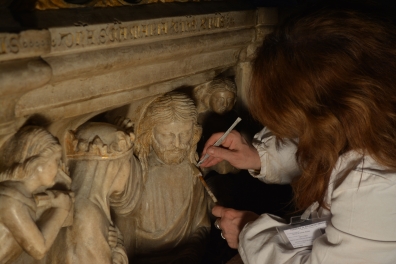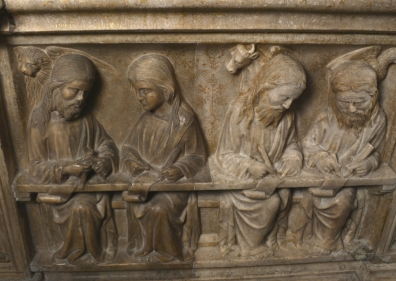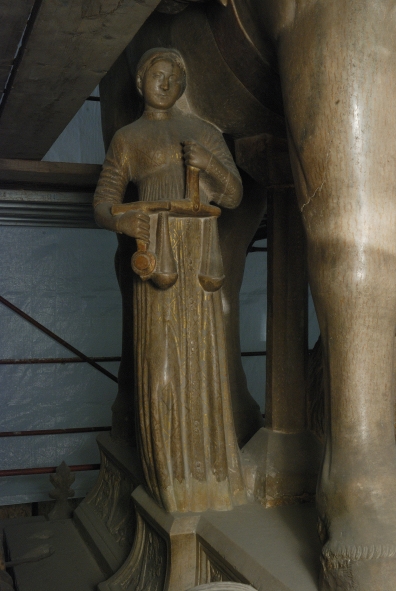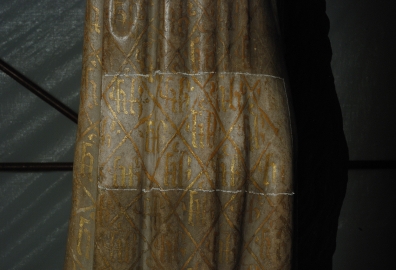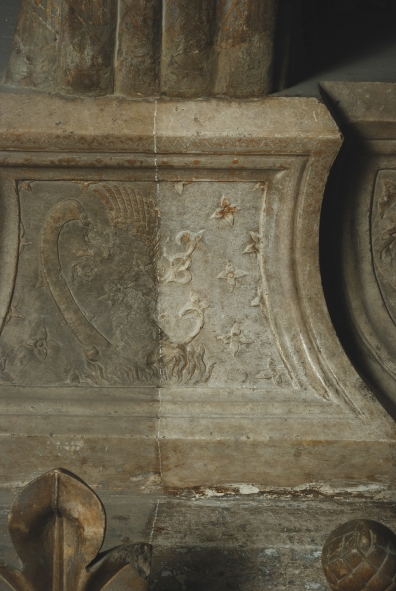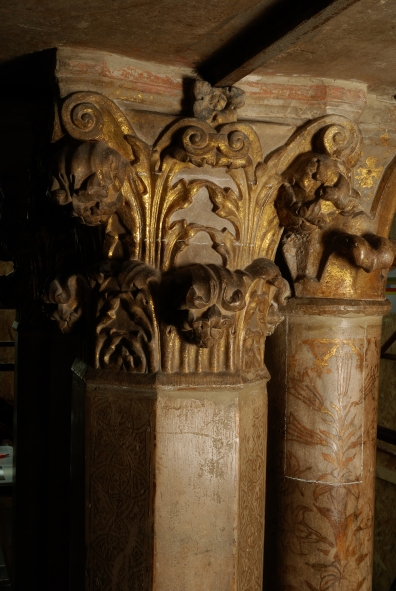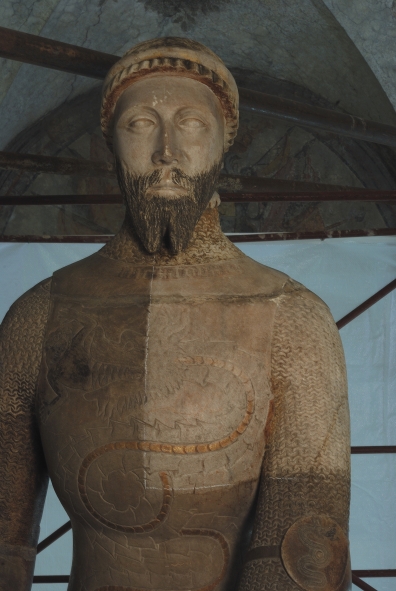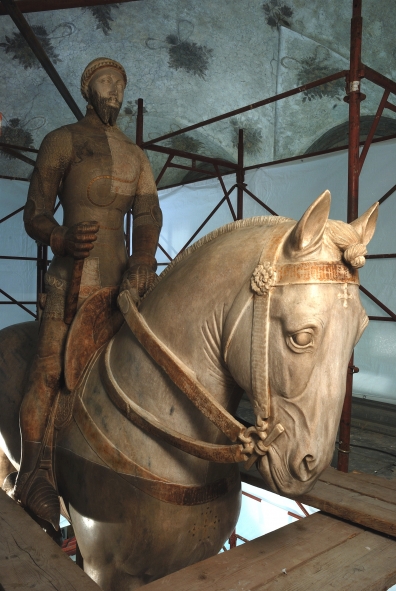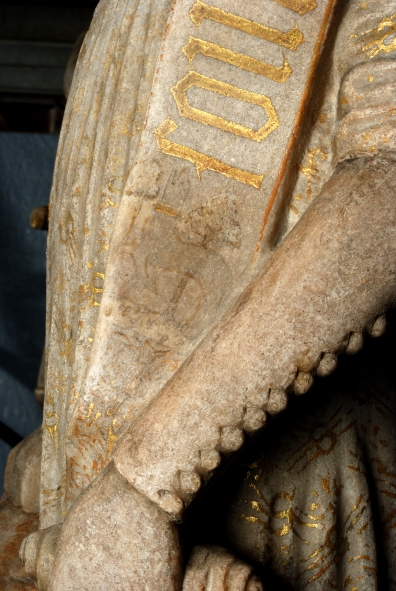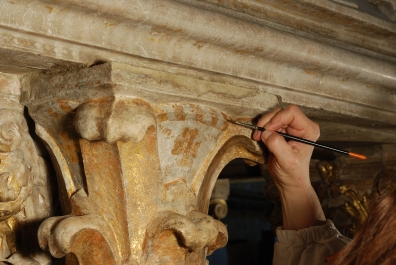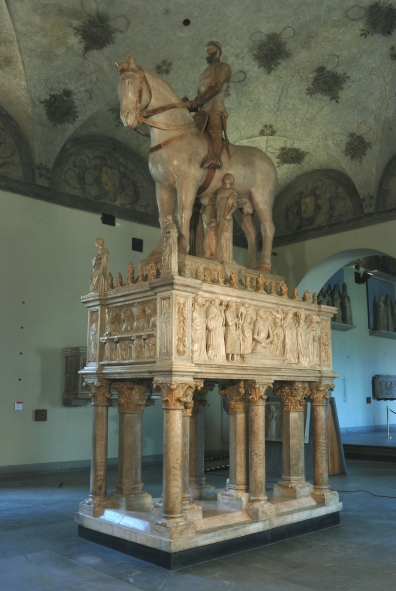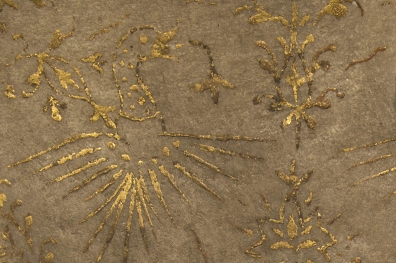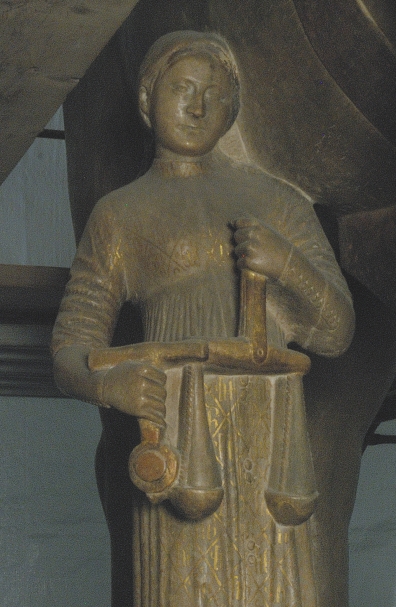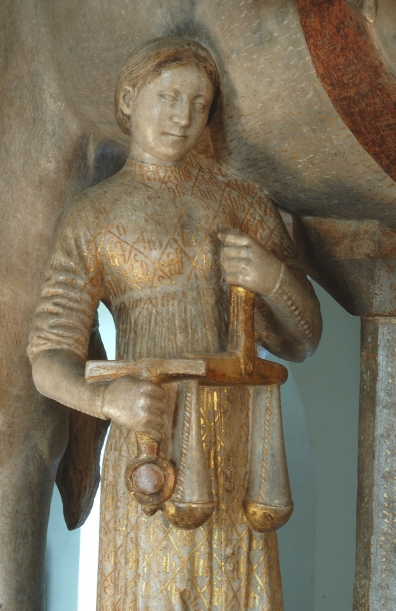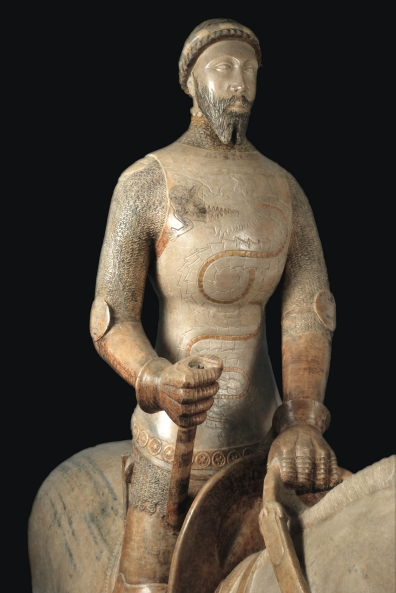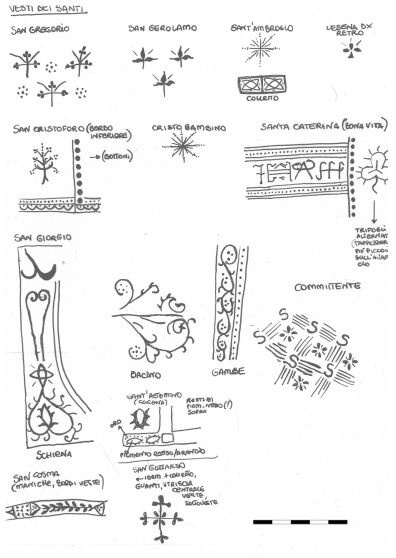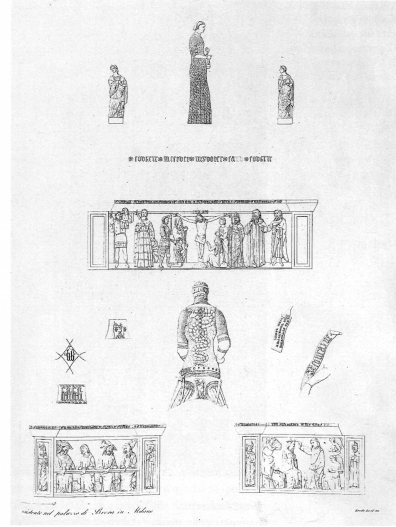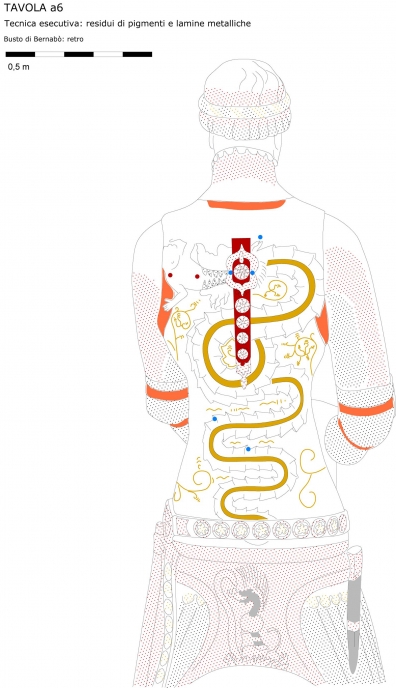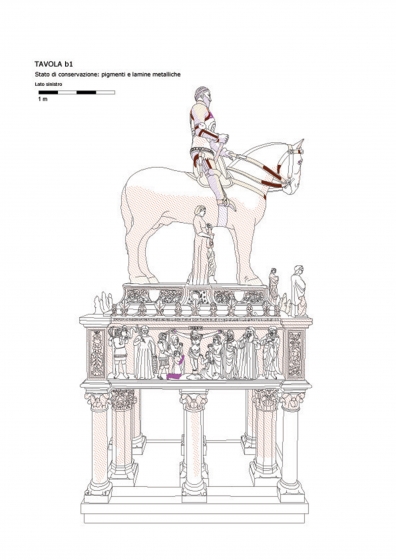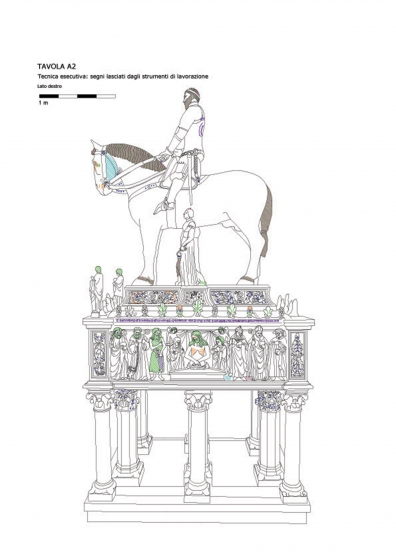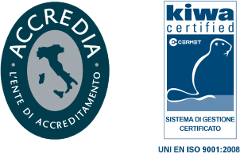The Restoration of the Equestrian Monument of Bernabò Visconti
Milan, Castello Sforzesco
"By gold and silver is covered the baron": this was how Matteo from Milan in the last decades of the fourteenth century said, in the funeral Lament of Bernabò Visconti, the first known description of the precious Candoglia marble artefact created by Bonino da Campione and collaborators in the second half of the fourteenth century
The very fine decoration made of gold foil, spread over the entire work, peeked under a massive deposit of dirt when, in 2001, we had the opportunity to carry out a light superficial cleaning and a first close study that had already led to exciting results, conveyed in the publication edited by Graziano Vergani L'arca di Bernabò Visconti al Castello Sforzesco in Milano. During the intervention, we had already realised the problems that a more thorough and necessary cleaning would have raised. Where the decorations had fallen, on the marble remained a clear sign of their missing. In many areas, the gilding was gone, but the decorative patterns remained legible despite the loss of the original material, albeit with a negative effect. What would have happened by removing the dirt that created a distinct contrast with the bright sign left by the fallen foil? This remained our first concern addressing the restoration in 2015, made possible thanks to the contribution of the Cariplo Foundation. It was necessary to develop a cleaning method that could guarantee the possibility of clearly identifying the trend of the decorations.
A second problem was represented by the fact, which was confirmed during the current intervention, that the work consists of several re-employment elements assembled together, with different characteristics and preservative vicissitudes. The monument had also been subjected to repeated maintenance over time, and therefore it presented a very evident chromatic inhomogeneity; the tone seemed undoubtedly darker from the bottom to the top because of the numerous waxes that had incorporated the dirt, spread more frequently in the lower parts that were more accessible.
It was, therefore, necessary to perform various preliminary tests to be able to develop intervention methods and materials, and operate in a differentiated way from zone to zone to obtain a homogeneous result. In the lower area, above all on the base, it has become necessary to intervene repeatedly to soften and remove the blackish deposit of dirt by operating not only chemically but also mechanically.
The initial concern was overcome by the results obtained: not only the contrasts between the cleaned surfaces and the impressions left by the fallen decorations were preserved, but in many cases, some details that were no longer perceptible have returned legible. This is the case, for example, of the representation of a barking dog between two trees on the cartouche of the allegorical figure of the Fortress, whose original presence was known to us through etching of 1824.
The restoration has continuously been supported by an in-depth study conducted jointly with the Works Management and with the involvement of various specialists including art historians, petrographers, botanists, epigraphists, heraldic and textile scholars. The work has been documented in detail through photographs, non-invasive UV analysis and fibre optic video-microscope and graphical surveys regarding the executive technique, the state of conservation and previous interventions.
All the decorative modules on the monument were also found on a 1: 1 scale. This required a remarkable effort considering the extraordinary variety and quantity of the decorations. Since the traces were often fragmentary it was necessary to survey the area in order to understand and complete the decoration, such as for the development of the decoration of the columns where, through the relief, it was possible to realize that the decorative module is made up of two lilies side by side and repeated twice on each of the columns.
The precise detection of each decoration is a repertoire that can be important for future studies and comparisons. This work is even more important if we consider that other historically and stylistically similar works such as the Scaliger Tombs in Verona, exposed outdoors for centuries and subjected to atmospheric agents, have lost much information regarding the modelling of the stone material and the original decoration based on pigments and metal foils, of which it remains only tiny traces. The Ark of Bernabò Visconti has fortunately always been kept in confined or semi-confined environments, and this factor has preserved the precious decorative apparatus from degradation due to run-off and erosion.
The cognitive analyses carried out during the intervention, aimed at the study of the constitutive materials as a function of the restoration, have provided information of fundamental importance in the study of the execution technique of the artefact, including the unexpected discovery of precious pigments and altered metal sheets and therefore not immediately recognizable: the use of silver foil for hair, beard, chainmail and part of the armour of Bernabò, the presence of cinnabar in several points of the monument, blackened due to alteration in metacinnabrite, as well as rare traces of lapis lazuli blue.
For more information: AR Nicola, G. Acuto, Il monumento di Bernabò Visconti al Castello Sforzesco di Milano tra studio e restauro: scelte di metodo per la pulitura e raccolta dati per futuri studi e confronti in Lo Stato dell'Arte 13. Atti del XIII Congresso Nazionale IGIIC - Centro Conservazione e Restauro la Venaria Reale - Torino 22/24 ottobre 2015
Menu
Certifications
Contacts
E-mail:Telephone: +39 0141.90.91.25
Address: Via Mazzini 8, 14020 Aramengo
